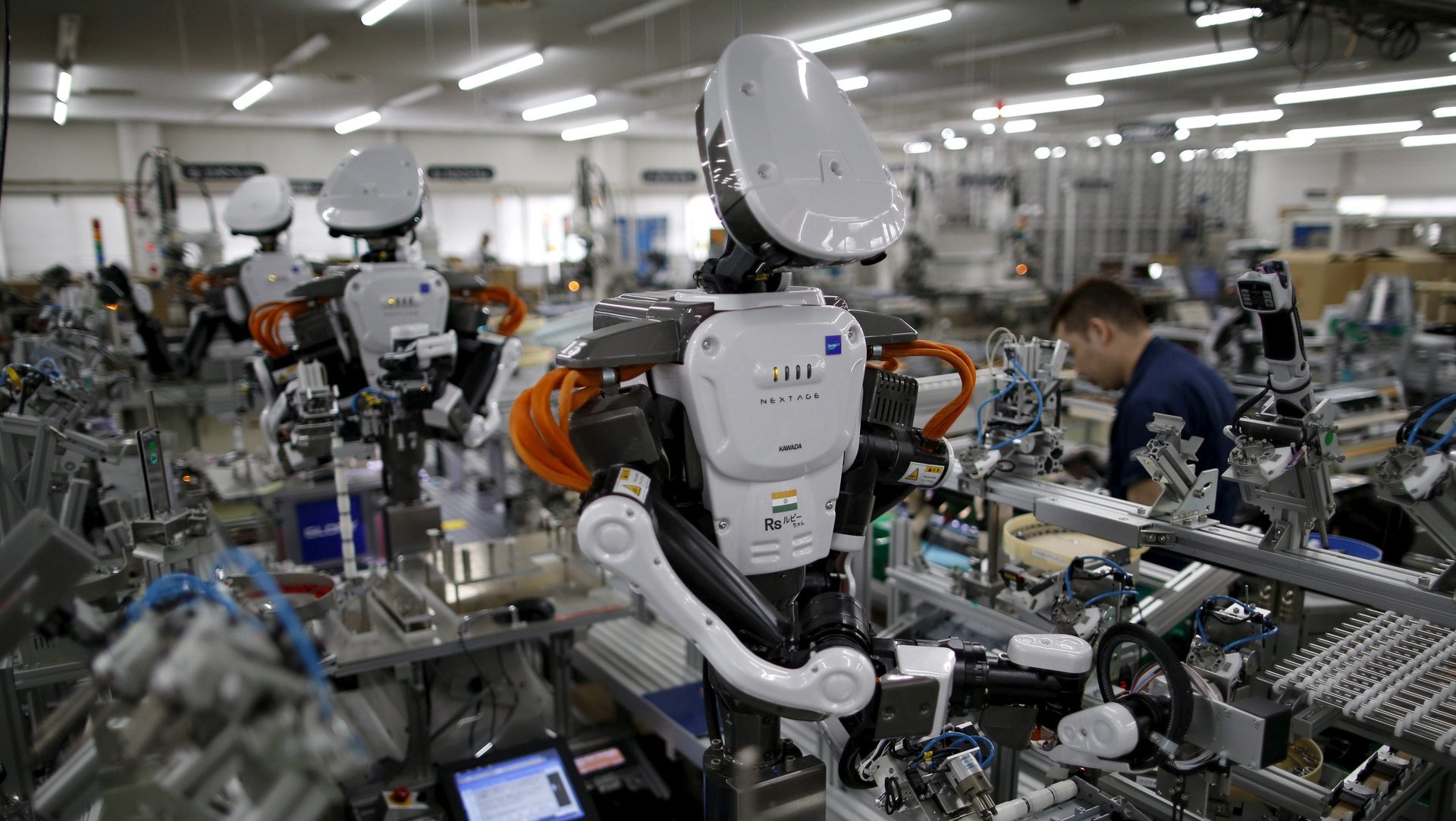The robots really are taking over—but only because there aren’t enough workers
Robots are taking over factory floors around the world because human workers are becoming scarcer, according to a new study published this month by the US’s National Bureau of Economic Research.


Robots are taking over factory floors around the world because human workers are becoming scarcer, according to a new study published this month by the US’s National Bureau of Economic Research.
The increase in automation is linked to the aging of blue-collar workers, say study authors Daron Acemoglu, from the Massachusetts Institute of Technology, and Pascual Restrepo, at Boston University. They analyzed robot use and labor-force demographics in a variety of countries, and found that the places most likely to deploy machines are those with the fastest-aging population. “Countries and US labor markets undergoing more major demographic change have invested significantly more in new robotic and other automation technologies,” they write.
To illustrate their point, here’s how the US compares to two countries where labor forces are aging more rapidly, Germany and South Korea:
The countries that use the most industrial robots are also the most active in manufacturing and exporting them.
That doesn’t mean that humans aren’t losing their jobs. Employers look at the trends and see that the overall labor force looks to be shrinking, and so are implementing robot workers now. The problem is that these robots tend to take on the same sorts of tasks—welding, machining, and packing—that are typically performed by workers in the middle of their careers, not the tail end. The study shows that workers feeling the brunt of automation in lost jobs and lower wages are between the ages of 36 and 55.
Those findings should make it easier for policy makers to track down the most affected workers—and help them survive the robot rush.